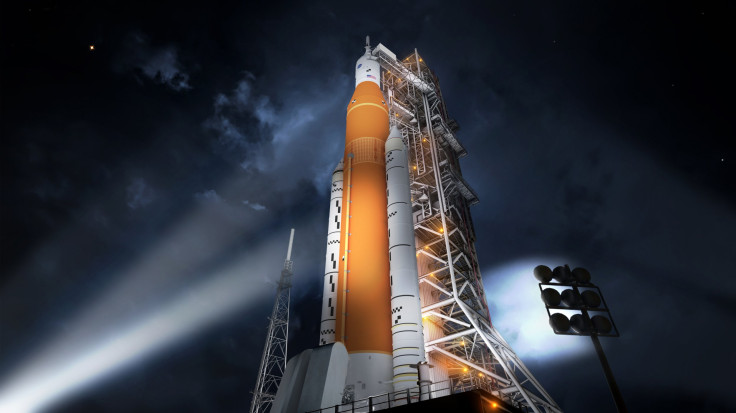Space Launch System Tubing Contamination Could Delay Rocket’s Maiden Flight

The maiden flight of NASA’s next big rocket, the Space Launch System, could witness further delays as the space agency discovered contamination in a part of the vehicle's core stage.
The issue, reported during a recent meeting of the Aerospace Safety Advisory Panel (ASAP), relates to the tubing in the engine section of the vehicle’s core stage. Essentially, during a recent quality assurance check of the stage and its four RS-25 engines, it was found that the tubing had been contaminated with paraffin wax — a material used in the tubes while production to prevent them from crimping, Space News reported.
Normally, the producer of the tube cleans the wax before shipping it out, but in this case, not just one, but most of the tubes in core-stage had been compromised. “The prime contractor determined the vendor was not fully cleaning the tubes and it was leaving residue in the tubes,” ASAP member Don McErlean said in the meeting. “This was retained as a requirement in the prime contractor’s spec, but it was not properly carried out.”
Boeing, the prime contractor responsible for constructing the rocket’s core stage, is inspecting all other tubes and leading the cleaning efforts. The company is also initiating new inspections and changing its quality assurance plans — efforts that kept the safety panel from introducing more corrective measures.
However, there is still no word on how much time the issue might take to be solved. McErlean said the mass of the involved tubes makes cleaning a complicated process, but none of the panelists commented on the final effect of this glitch. Meaning, it is still unclear if the projected completion timeline for the core-stage, currently being built at the Michoud Assembly Facility in New Orleans, is still achievable.
To recall, Bill Hill, the deputy associate administrator for exploration systems development, mentioned the contamination issue in a presentation to the NASA Advisory Council’s human exploration and operations committee in March. However, he didn’t go into details and said: “We’ve turned the corner on that.” In the same presentation, Hill noted that the core stage is scheduled to be completed by December 2018, but that also incorporated three to four months of schedule risk, which means, if the need arises, the completion of the core-stage and launch preparation might be pushed ahead by a few months.
As per the tentative schedule, NASA expects the core-stage to be completed and shipped to the Stennis Space Center in Mississippi by the end of this year for engine tests that would prepare the Space Launch System for Exploration Mission (EM) 1, its maiden flight in the latter part of December 2019.
© Copyright IBTimes 2024. All rights reserved.











